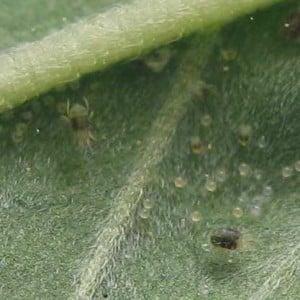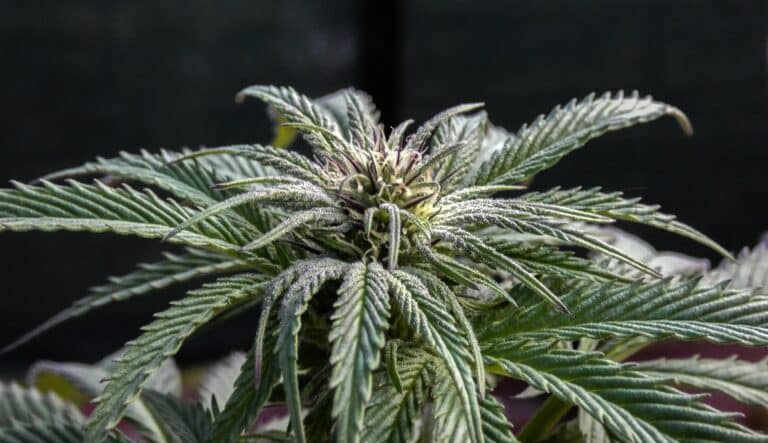 Spider Mites And Marijuana Plants
Spider Mites And Marijuana Plants
Spider mites on marijuana plants have to be one of the worst things out there. I always refer to spider mites as one of the three marijuana plant plagues, with the other two being powdery mildew and heat. Any of those three items can ruin your medical marijuana garden in a hurry. Fortunately, there is quite a bit of information about spider mites and marijuana plants.
Below are a few articles that I found by legendary marijuana grower Ed Rosenthal, along with some YouTube videos that I thought was helpful when dealing with spider mites. There is so much bad information on the internet, I hope this article narrows down your search a bit. If you have any tips or comments, please leave them below so that others can benefit from your knowledge:
By Ed Rosenthal
Will setting plants outdoors cure their mite infestation?
My plants are infested with spider mites and I plan to plant them outdoors in October to flower them. Will the wind and rain solve the mite problem naturally?
Jonny Switchblade
Jacksonville, Florida
Probably. The outdoor environment is much less friendly to mites than indoors. Wind, rain, cool weather and predators will all take their toll on the mites. To remove most of the mites as the plants are moved outdoors, spray the plants with water using a hose with a nozzle. Mites hang out mostly on the underside of leaves so that’s where the spray should be aimed.The pressurized water dislodges most of the mite population, decreasing stress on the plants. After the plants are washed, spray them with an anti-transpirant to prevent stresses that result in dehydration and wilting. Many mites and their eggs will become trapped in the thin film of drying anti-transpirant that covers the leaf.
Once the plants are outdoors for a few weeks, the mite problem should disappear.
Ganja Guru Ed Rosenthal on how to eliminate mite infestations
Question: We have been growing for more than five years and we constantly have a problem with spider mites. Sometimes we use a homemade pesticide we make from dish soap, tobacco, alcohol and water. This knocks them out for one and a half to two months but then they return. How do they get into our garden? How can we protect the plants?
P.O., Ottawa, Ontario
Ed Rosenthal: There are a couple possible explanations for your recurrence of mites. One is that they have re-colonized your garden from outside and the other is that your knock-down spray, while highly effective, didn’t get every last mite. Just one fetid female can restart the cycle.
The mite road to your garden from outside has several arteries: they can hitchhike a ride on shoes, clothing, hair or garden tools. They can ride in on the air stream or thrill-slide through an unfiltered vent system to a veritable sea of green. They can also sail through an open window or door. The easiest is garden-to-garden transfer via plant or cutting. Nothing could be more convenient; they can continue to eat while traveling.
If your garden gets re-infested during the winter when there are no active mites outdoors, and you haven’t carried a mite in after visiting another garden, you should assume that you did not totally eradicate the mites or their eggs and the survivors repopulated the green room. Mite eggs are somewhat impervious to insecticides. If this is the case, the next time you spray, instead of a single treatment, use the pesticide three times, three to four days apart. That way any survivors or newborns will be killed.
By Ed Rosenthal
Will enough CO2 suffocate mites in my growroom?
If I turn up the CO2 to 1,500-2,000 ppm, will it suffocate the spider mites and kill them? If it won’t, what will?
Blueberrybozo,
Texas
Carbon dioxide (CO2) is used by plants as an ingredient for photosynthesis. Plants combine it with water using light as energy. The result is sugar, which is used to supply the plant with building material and energy. Normally, CO2 is found in the air at rates of 350-400 parts per million (PPM) and climbing. When plants are given bright light they photosynthesize faster in the presence of air enriched with CO2. A typical level for bright rooms is 1,500-2,000 ppm.
CO2 is not a poison gas. We breathe it in every time we inhale and we breathe out a lot more of it when we exhale. When gardeners visit their CO2 enriched gardens they breathe levels five to six times greater than normal.
Mites breathe oxygen. If the CO2 were turned up a lot higher the mites would be able to breathe as long as there was adequate oxygen in the air. If they were placed in an all-CO2 environment where they received no oxygen for a few hours they would probably “hibernate” in some way. They would have enough of a survival rate to continue hassling your plants.
Oxygen-free environments have been used for grain storage with mixed results. They are much more effective in controlling rodents than insects.
There are a lot of approaches to eliminating mites. You can use registered organic pesticides such as Cinnamite, neem oil or other neem oil-based or organic miticides.
EDITOR’S NOTE:
Releasing a full container of carbon dioxide into a sealed grow set-up will kill all mites and insects. But, don’t be in the room while the CO2 is being released! It would be enough to KILL YOU! I have seen this technique of bringing the CO2 to 10,000 ppm for 15 minutes to kill all pests. You must vent out the CO2 before entering the room. Two applications, five days apart, will kill all mites, pests and their offspring.








